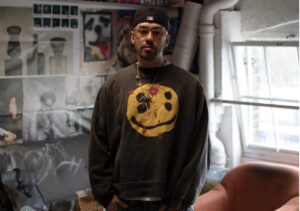Public art has the unique ability to transform spaces, turning everyday urban environments into canvases for creativity and cultural expression. In Great Falls, Montana, a recent surge in mural installations has brought vibrant color and life to the downtown area. These murals, painted on the sides of buildings, alleyways, and public spaces, are not only visually striking but also serve as a reflection of the city’s evolving identity, its cultural diversity, and the power of community-driven art. In this critical analysis, we will explore the significance of the murals in downtown Great Falls, their artistic value, the role of public art in urban revitalization, and the broader cultural implications of this movement.
The Power of Murals in Urban Spaces
Murals have a long history as a form of public art, dating back to ancient civilizations where large-scale paintings were used to communicate stories, historical events, and cultural values. In the modern era, murals have become a popular medium for artists to engage with communities, often reflecting social issues, local history, or simply adding beauty to otherwise ordinary urban landscapes. The murals in downtown Great Falls fit into this tradition, providing a visual dialogue between the art and the community that inhabits the space.
The revitalization of downtown Great Falls through murals is part of a broader movement seen in cities across the world. Public art, particularly large-scale murals, can play a crucial role in urban renewal efforts by transforming neglected or overlooked areas into vibrant, attractive destinations. The murals in Great Falls do just that—they turn blank walls and previously uninspired areas into lively, colorful environments that invite both locals and tourists to stop, look, and engage with the space.
One of the most important aspects of the murals in Great Falls is their accessibility. Unlike art housed in museums or galleries, which can often feel exclusive or intimidating, murals are democratic by nature. They exist in public spaces where anyone, regardless of background, can encounter and engage with them. This accessibility helps to foster a sense of ownership and pride within the community, as the murals become a part of the everyday experience of the people who live and work in the area.
Artistic Value and Diversity of Styles
The murals in downtown Great Falls are diverse in style, ranging from abstract, contemporary designs to more traditional, representational imagery. This variety reflects the range of artistic voices contributing to the city’s cultural landscape. Some murals feature bold, graphic shapes and vibrant colors that immediately catch the eye, while others depict more detailed, narrative-driven scenes that invite viewers to linger and contemplate their meaning.
One of the standout murals in downtown Great Falls is a large, colorful piece that spans the side of a historic building. It features a dynamic blend of geometric shapes and organic forms, creating a sense of movement and energy that contrasts with the stillness of the surrounding architecture. The use of bright, saturated colors—yellows, blues, reds—infuses the area with a sense of joy and optimism, transforming an otherwise utilitarian space into a lively hub of visual interest.
In contrast, another mural nearby takes a more figurative approach, depicting scenes from the city’s past, including representations of indigenous peoples, settlers, and wildlife native to the region. This mural serves as both an artistic and educational piece, offering viewers a window into the history of Great Falls and its cultural heritage. The detailed, realistic style of this mural stands in contrast to the more abstract works, highlighting the range of artistic expression present in the city’s public art.
What makes these murals particularly powerful is their ability to tell stories. Whether through abstraction or representation, each mural offers a different narrative—some personal, others collective—that contributes to the larger cultural conversation happening in Great Falls. These stories are not confined to the city’s history but also reflect its present and future, incorporating themes of diversity, community, and transformation.
Public Art and Community Engagement
One of the key elements that sets public murals apart from other forms of art is the role of community engagement in their creation. Many of the murals in downtown Great Falls were created in collaboration with local artists, residents, and organizations, ensuring that the artwork reflects the values and interests of the community. This collaborative approach is essential to the success of public art projects, as it fosters a sense of ownership and pride among the people who live and work in the area.
The process of creating these murals often involves public input, whether through community meetings, workshops, or even participation in the actual painting of the murals. This engagement ensures that the artwork is not imposed on the community from the outside, but rather grows organically out of the shared experiences and ideas of those who call Great Falls home. As a result, the murals serve as a reflection of the community’s identity, aspirations, and values.
In addition to fostering community pride, the murals have also contributed to economic revitalization in downtown Great Falls. Public art has been shown to attract tourists, draw foot traffic to local businesses, and enhance the overall vibrancy of urban areas. The murals in Great Falls have already begun to generate interest from both residents and visitors, encouraging people to explore the downtown area and discover new businesses, cafes, and cultural spaces.
The Broader Cultural Implications
While the murals in downtown Great Falls are undeniably beautiful, their significance goes beyond aesthetics. These works of public art represent a broader cultural shift towards embracing creativity, diversity, and community engagement in urban spaces. In a time when many cities are grappling with issues of gentrification, social inequality, and cultural displacement, public art offers a way to reclaim and reimagine urban spaces in ways that are inclusive and empowering.
The murals in Great Falls, for example, celebrate the city’s rich cultural history while also looking towards the future. By including depictions of indigenous peoples, pioneers, and contemporary life, the murals offer a nuanced portrayal of the city’s identity, one that acknowledges both its past and its potential for growth and transformation. This kind of representation is essential in creating a more inclusive, equitable urban environment, where all members of the community feel seen and valued.
Furthermore, the murals serve as a reminder of the importance of creativity in everyday life. In a world that often prioritizes productivity and efficiency over artistic expression, public art offers a space for imagination, reflection, and inspiration. The murals in downtown Great Falls invite viewers to slow down, engage with their surroundings, and experience the city in a new and meaningful way.
Challenges and Considerations
Despite the many benefits of public art, there are also challenges and considerations that come with creating murals in urban spaces. One of the primary concerns is the issue of maintenance and preservation. Murals, by their very nature, are exposed to the elements, and over time, they can become weathered or damaged. Ensuring that these works of art are properly maintained and preserved is essential to their longevity and continued impact on the community.
Another challenge is the potential for public art to become a tool of gentrification. While murals can enhance the aesthetic appeal of a neighborhood and attract tourists, they can also contribute to rising property values and the displacement of long-time residents. It is important for cities like Great Falls to consider the broader social and economic implications of public art projects, ensuring that they benefit all members of the community, rather than contributing to inequitable urban development.
The murals brightening downtown Great Falls are more than just decorative additions to the cityscape—they are powerful expressions of creativity, community, and cultural identity. By transforming public spaces into canvases for artistic expression, these murals invite viewers to engage with the city in new and meaningful ways. They celebrate the diversity of artistic voices in Great Falls, reflect the city’s history and aspirations, and contribute to the ongoing revitalization of the downtown area.
No comments yet.








